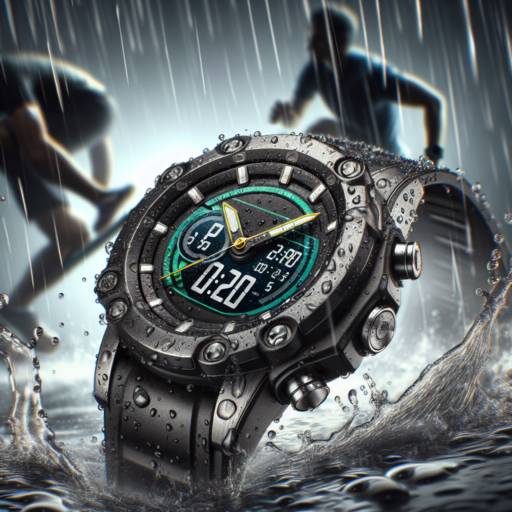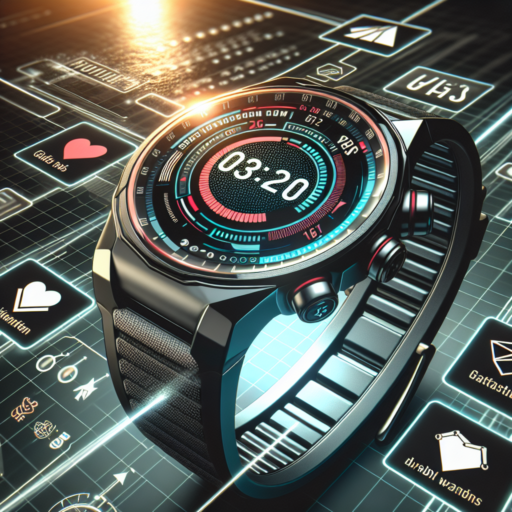What smart watches are waterproof?
In today’s market, a wide array of smartwatches boast impressive waterproof capabilities, designed to cater to swimmers, divers, and anyone leading an active lifestyle or simply seeking protection against accidental water exposure. Understanding which smart watches are waterproof involves looking at their water resistance ratings, typically indicated by ATM (atmospheres) or IP (Ingress Protection) codes, which determine how well a device holds up under various water conditions.
Understanding Water Resistance Ratings
When examining waterproof smartwatches, it’s crucial to understand the significance of their water resistance ratings. A device rated at 5 ATM is generally capable of withstanding pressures equivalent to a depth of 50 meters, making it suitable for swimming and low-velocity water activities. On the other hand, watches with a higher ATM rating, such as 10 ATM, are fit for snorkeling and high-impact water sports. The IP code, such as IP68, suggests that a device is completely protected against dust and can be submerged in water beyond 1 meter for a specified duration, as determined by the manufacturer.
Popular Waterproof Smartwatches
- Apple Watch Series 7: With a water resistance rating of 50 meters, this smartwatch handles swimming sessions without a hitch.
- Garmin Forerunner 945: Designed for triathletes, this device not only tracks swimming metrics but is also safe at depths of up to 50 meters.
- Fitbit Versa 3: Boasting an IP68 rating, it’s more than capable of enduring submersion, making it perfect for those who engage in water-based activities.
In summary, the waterproof feature in smartwatches has become a standard expectation among users leading active or outdoor lifestyles. By focusing on the water resistance rating of a smartwatch, consumers can make informed decisions to find a device that best suits their aquatic adventures.
How waterproof is a 200M watch?
When it comes to the water-resistance of a 200M watch, there’s often a bit of confusion about what exactly this rating means for wearers. Technically, a watch labeled as 200M waterproof is designed to withstand pressures equivalent to a depth of 200 meters underwater. This includes activities such as swimming, snorkeling, and even diving, making it significantly resilient for most aquatic adventures.
However, it’s important to note that the term «waterproof» might be a bit misleading, as no watch can be entirely impervious to water under all circumstances. Instead, terms like «water-resistant» are more accurate. The 200M rating specifically indicates that the watch can handle high-pressure scenarios, up to the mentioned depth, without allowing water to permeate its casing.
Durability and maintenance also play a crucial role in maintaining the water-resistance of a 200M watch. Regular checks are recommended to ensure that the seals remain intact and the watch retains its integrity over time. This includes inspections of the crown, case, and crystal for any potential vulnerabilities that could compromise its water-resistant capabilities.
Are waterproof watches really waterproof?
The term «waterproof» might conjure images of invincibility against water damage, but when it comes to watches, the reality is a bit more nuanced. Many watches are indeed marketed as waterproof, but what this actually means can vary significantly. Understanding the specifics of waterproofing in watches is crucial for selecting a timepiece that meets your needs, whether you’re an avid swimmer or simply looking for something that can withstand the occasional splash.
The Importance of Water Resistance Ratings
The key to understanding the water resistance of watches lies in their ratings. These are usually denoted in meters (e.g., 30m, 50m, 100m) and indicate the level of pressure a watch can withstand before water ingress becomes a risk. However, these numbers don’t translate directly to diving depths. For instance, a rating of 30m doesn’t mean you can take your watch 30 meters underwater. Instead, it suggests that the watch can handle light splashes or brief immersion in water. As you move higher in ratings, the supposed robustness against water improves, but it’s essential to recognize the technicalities behind these figures.
Understanding «Waterproof» Claims
It’s a common misconception that «waterproof» watches are completely immune to water damage under any circumstances. In reality, the term waterproof might be somewhat misleading. Watches can resist water entry to a certain extent but are not impervious to water pressure or prolonged exposure. Factors such as age, wear and tear, and rubber gasket degradation can reduce a watch’s water resistance over time. Therefore, regular maintenance and testing are pivotal for ensuring the longevity of your waterproof watch’s capabilities.
In essence, while many watches are labeled as waterproof, interpreting this claim requires an understanding of water resistance ratings and the conditions under which the watch remains protected against water. It’s crucial for users to consider the specific requirements of their activities and to manage their expectations about what their «waterproof» watch can handle.
No se han encontrado productos.
Can you swim with a waterproof watch?
Certainly, swimming with a waterproof watch is feasible, allowing swimmers to keep track of their time underwater without the fear of water damage. Waterproof watches are specifically designed to withstand certain depths and pressures, making them ideal for both casual swimmers and professional divers. It’s important, however, to understand the limits and features of your waterproof watch before taking the plunge.
Understanding Water Resistance Ratings
Waterproof watches come with different ratings, typically measured in meters (e.g., 30m, 50m, 100m). This rating is crucial as it indicates the level of water pressure the watch can withstand. For instance, a watch with a 30m rating is suitable for everyday splashes or brief immersion in water, while a 100m rated watch is more suited for swimming and snorkeling. Always check your watch’s water resistance rating before engaging in water activities to ensure it matches your needs.
Precautionary Measures
Taking proper care of your waterproof watch is key to maintaining its functionality. Avoid exposing your watch to extreme temperatures and chemicals like chlorine or salt water, as they can compromise the watch’s seals and water resistance over time. Furthermore, it’s advisable to have the water resistance of your watch tested annually, especially if you frequently engage in water activities. This ensures the watch remains in optimal condition and safe for swimming.
In summary, swimming with a waterproof watch is certainly an option for water enthusiasts. By understanding the specific water resistance rating of your watch and taking necessary precautions, you can enjoy your swim without jeopardizing the integrity of your timepiece.




